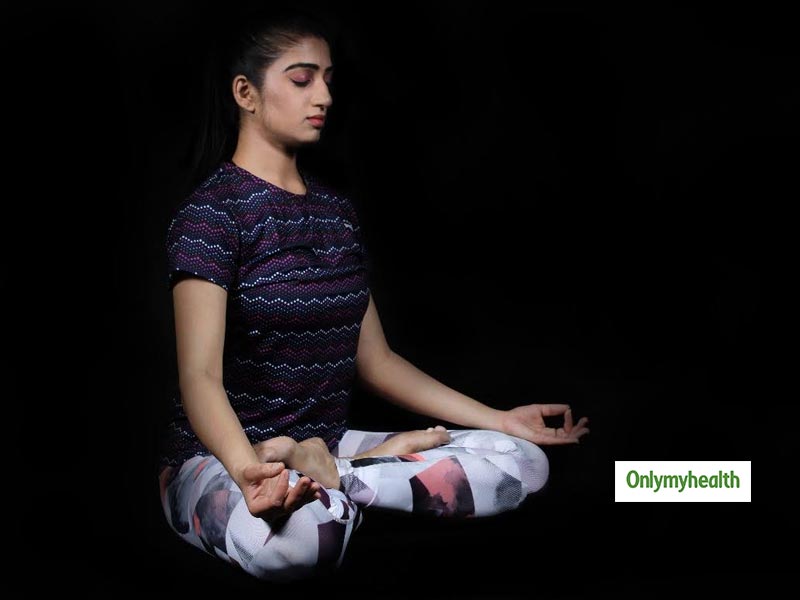
A hiatal hernia is a type of hernia in which the upper portion of the stomach moves up through the diaphragm and into the chest region. The diaphragm contracts continually as you breathe in and out. It lies between your abdomen and chest. Today we are going to discuss how yoga breathing techniques or pranayama can help in reducing the severe consequences of hiatal hernia. According to research on yoga, it has been indicated that breathing exercises have therapeutic effectiveness. The ancient yoga philosophy considers breathing a fundamental tool to enhance one’s well-being and treat numerous diseases.
Table of Content:-
There are certain yoga breathing techniques which we that can be helpful in the aid of hiatal hernia:
Kapalbhati
Kapalbhati is good breathing pranayama for most of the diseases it cures very well but in hiatal hernia, kapalbhati should be done in a different way. Normally, we push and pull our stomach or expand and contract our stomach fast and vigorously which is beneficial for the body but in hiatal hernia it would be risky for you to stain on your stomach or thoracic region, so for the right technique just sit in a comfortable pose adopt sukhasana, padmasana, Ardha padmasana, Vajrayana, or on the chair, just as kapalbhati pranayama take breath in through your nose slowly, do no expand your chest and stomach too much outside and then continuously breath out with a very short and steady breathing exhalation. Remember do not take out your breath vigorously and keep your abdominal muscles relax very short expand and contraction is acceptable you can place your hand on the middle abdominal area or tie a cloth on the stomach to stop movement in the stomach.
READ: 8 Reasons Why You Should do Yoga Every day
Ujjayi Pranayama
In ujjayi pranayama, sit in a comfortable posture and keep inhaling and exhaling slowly through the nose. Usually, in ujjayi pranayama, breathing technique should be fast to raise metabolism and heat in the body and strong and fast movement in chest and abdomen but in hiatal hernia, the slow and steady movement gives you therapeutic results. Within 3 to 6 months you can cure yourself of the hiatal hernia.
Abdominal Deep Breathing

READ: International Yoga Day 2019: Yoga Asanas for Asthma Patients to Lose Weight
This is a foundation of breathing practice for Pranayama. In Abdominal deep breathing, your focus should be on the movement of the stomach in and out. Do this by sitting in any posture like padmasan, Ardha padmasana, Vajrasana or you can also adopt savasana, do not overstretch the stomach out and in. Just observe your breath and movement of the stomach, the right way to breathe is when you breathe in the stomach out and on the breath out stomach in. It is also called Diaphragmatic breathing, is breathing that is done by contracting the diaphragm. Do not hold your breath too much inside your stomach area. Avoid jerks in the whole process. It should be smooth, continuous and relaxing.
Thoracic Breathing
This is just like an abdominal breathing technique, you can also say chest deep breathing. In this practice when you inhale and exhale expanding and contracting the chest only. Air flows through both nostrils, slowly and continuously. Now there is no movement in the stomach to avoid its bulging. To practice this first lie in Shavasana and relax your body. Place your right hand on your stomach and left on your chest. Start inhaling by slowly expanding the ribcage. You can do this practice in any yoga sitting posture.
Apart from this, you can also try some yogasanas like
- Paschimottanasana
- Dandasana
- Bhadrasana
- Tadasana
- Utkatasana
- Vrikshasana
- Veerasana
- Padahastasana
- Naukasana
These are very effective and helpful to aid hiatal hernia. Remember do not perform backward bending postures. Only do forward bending but do not overstretch yourself in forwarding bending postures and always perform asanas under any expert guidance and according to your problem's stage.
(With inputs from Jasmine Kashyap. She is Fitness Expert & Director at Goodways Fitness)
Read more articles on Yoga
How we keep this article up to date:
We work with experts and keep a close eye on the latest in health and wellness. Whenever there is a new research or helpful information, we update our articles with accurate and useful advice.
Current Version
